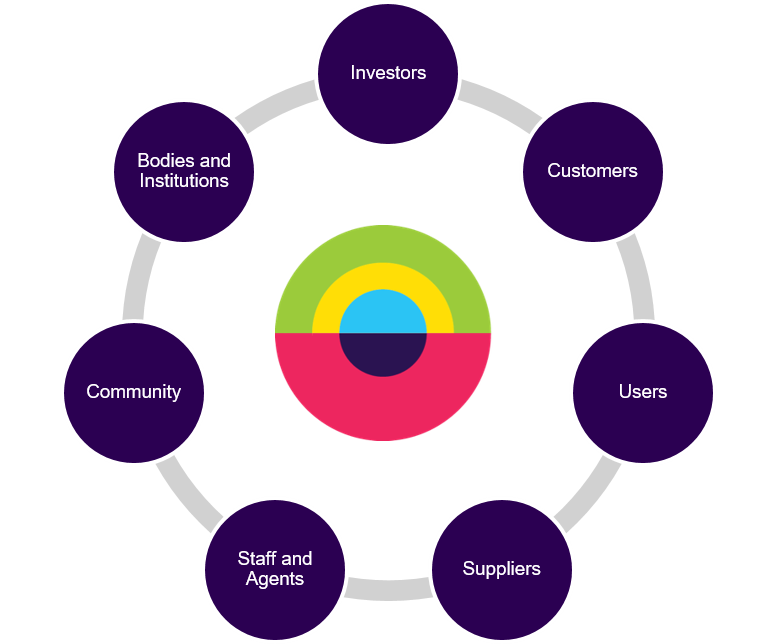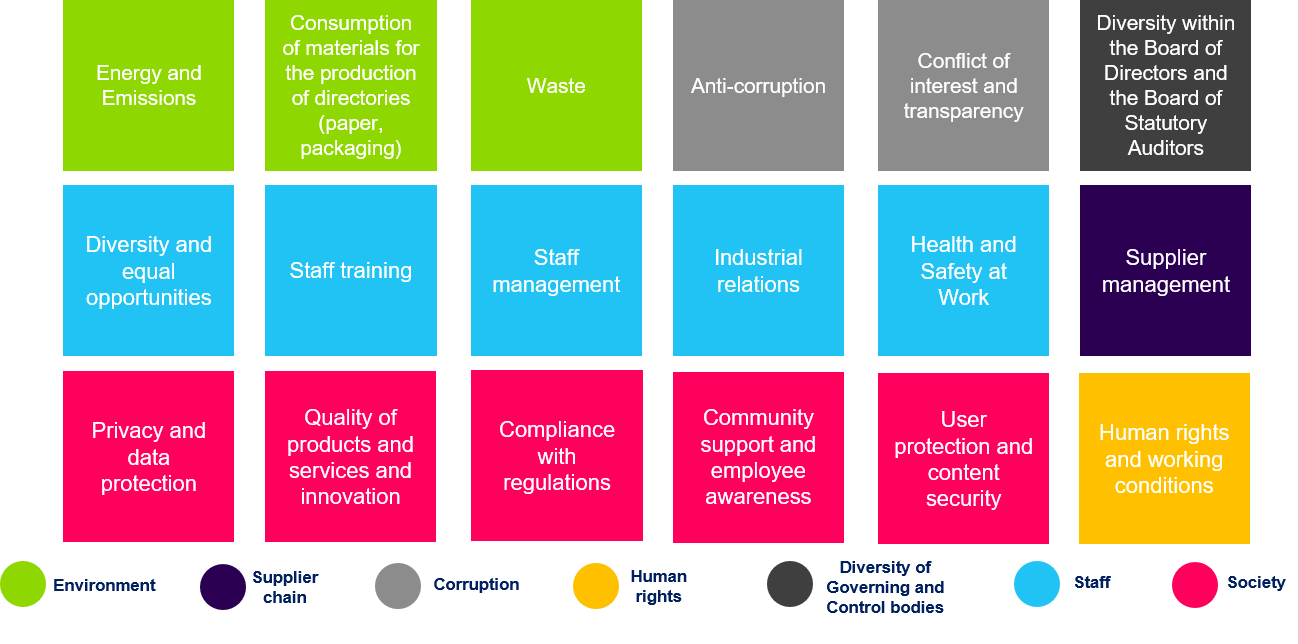Stakeholders engagement activities involved various stakeholders: suppliers, customers, employees, agents and local bodies and institutions. Three round tables were organised to allow stakeholders to express their views on issues relevant to the Group, providing interesting and useful proposals for defining any new sustainability objective for Italiaonline.
Stakeholders map

| Involved stakeholders | Discussed topics |
|---|---|
| Suppliers | Material consumption |
| Waste management | |
| Community support | |
| Customers | Products and services quality and innovation |
| Agents | Privacy and data protection |
| Staff | Staff management |
| Energy and emissions | |
| Bodies and Institutions | Community support |
Identification
Potentially relevant sustainability issues have been identified on the basis of an internal and external analysis of:
- the activities carried out by the Italiaonline Group
- the sector features, the approaches adopted by comparable companies nationally and worldwide
- topics suggested by the GRI (Global Reporting Initiative) in the document “Sustainability Topics for Sectors: What do stakeholders want to know?”
Valuation
The emerged issues were discussed and evaluated by the management in dedicated meetings so as to allow the definition of those most representative of the social and environmental impacts generated by the Group.
Prioritisation
At the end of the analysis, a series of material issues directly related to the aspects governed by Legislative Decree 254/2016 were identified.
